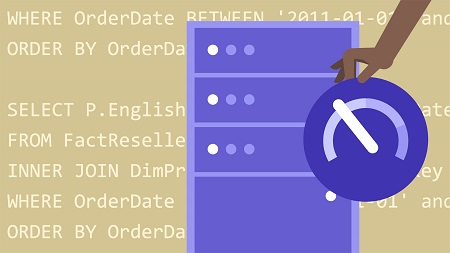
English | MP4 | AVC 1280×720 | AAC 48KHz 2ch | 3h 44m | 426 MB
Developers face an array of challenges when trying to develop performant applications for Microsoft SQL Server. In this course, instructor Joey D’Antoni shares concepts and strategies that can help you enhance your app’s performance on SQL Server. Throughout this course, Joey walks through best practices for building efficient, scalable database applications. He covers an array of topics, including execution plans, columnstore indexes, datatypes, temporary objects, and what not to do with SQL Server. He also goes over indexing, and shares how best to create temporary objects.
Topics include:
- Query execution
- How to read an execution plan
- What not to do with SQL Server
- Why cursors are bad
- Why scalar UDFs are expensive
- Datatypes and design
- Indexing
- What is a columnstore index?
- Transaction isolation
Table of Contents
Introduction
1 Welcome
2 What you should know
Query Execution
3 Execution plans introduction
4 How to read an execution plan
5 Execution plan XMLs
6 Key lookup – When it s good and when it s bad
7 Nested loop vs. hash join
8 Query Store
9 Stored procedures vs. dynamic SQL
10 Missing index warnings
What Not to Do with SQL Server
11 Why cursors are bad
12 Why while loops are cursors
13 What to do instead of cursors
14 Why scalar UDFs are expensive
15 Views and vested views
16 Why stored procedures are better than views for reports
Datatypes and Design
17 The importance of datatypes
18 GUIDs vs. INT BIGINT
19 Unicode data
20 The perils of storing files in your database
21 What datatype conversions do to your query performance
Temporary Objects
22 Temp tables
23 Table variables
24 In-memory temp tables
Indexing
25 Choosing a PK or clustered index key
26 Why you want a clustered index
27 Where you might not want a clustered index
28 Overview of nonclustered indexes
29 Included column explanation
30 Filtered indexes
Columnstore
31 What is a columnstore index
32 Clustered columnstore and DW
33 Nonclustered columnstore – Why
34 Using filtered nonclustered columnstore for HTAP
Isolation Levels
35 Transaction isolation
36 RCSI – Why it s good
37 Implicit transactions – Why they re terrible
Conclusion
38 Next steps
Resolve the captcha to access the links!